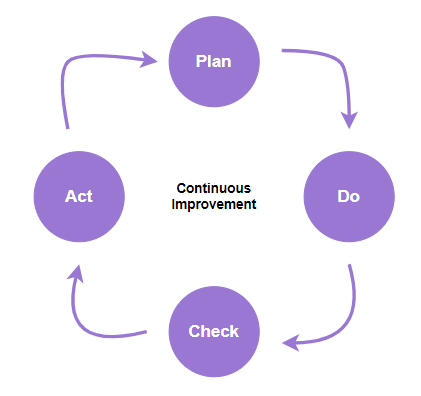Imagine the process of buying a new car. Before you buy a specific one you would develop an opinion on buying a certain brand by comparing that brand with others on the basis of reliability, performance, or fuel economy.
For quality to translate to your users, you need to create products and a culture that consistently meets certain requirements and standards. This makes it possible for your organization to be trusted by thousands and thousands of users. The process that enables this is called quality assurance.
In this article, you’ll learn what quality assurance is, different methods you can implement it with, and what the process looks like.
What is quality assurance (QA)?
Quality assurance (QA) is a proactive approach to ensure your products or services meet defined quality standards, customer requirements, and real-world conditions.
It’s a process to prevent defects upfront and primarily focuses on building quality into the product from the outset, rather than exploring and correcting defects after development.
Quality assurance can involve a simple testing and verification activity on a small product before packaging/releasing to market, or it can be a complex set of activities in a process or multiple processes like producing a car or banking systems.
Principles of quality assurance
In general, there are two principles that any quality assurance team would follow:
- Fit for purpose — The product or service should meet all the objectives or purposes that it was developed for
- Right first time — Your product should be free from defects. It should work right from the first time it has been created
Other principles that are commonly followed in QA are:
- Customer focus — Satisfied customers are crucial for business success and long-term sustainability. This becomes the core principle of any QA team and every aspect of QA should prioritize meeting and exceeding customer needs and expectations
- Prevention over detection — QA takes a proactive approach to preventing defects rather than fixing them after they occur. This principle encourages building robust processes to minimize errors at an early stage of development resulting in high-quality deliverables
- Cost-effective process implementation — Even though QA value-add to the organization and its businesses is high, it’s also important that the processes, practices, tools, and technologies implemented as part of QA are cost-effective. There should be a balance between cost and benefit, ensuring quality without unwanted expenses
- Employees involvement — Without a strong commitment from employees towards quality output, it’s impossible to deliver customer expectations. Quality is a collective responsibility
4 types of QA
Quality assurance can be categorized into different types based on the context. There are four main types depending on your specific need:
- Product quality assurance — The focus is on adapting, developing, and practicing processes that help build final products that meet defined quality requirements and standards. The main functions of this type involve evaluating product functionalities, performance, safety, reliability, security, and load in real-time conditions
- Process quality assurance — While the above one focuses on the final product, process QA focuses on the processes, practices, tools, and technologies adopted, and activities in the development of the final product. The primary goal here is to continuously evaluate and improvise the processes that are adopted to develop the product
- Internal quality assurance — As the name suggests, the processes that are adopted inside the organization to ensure quality in the products or services that are delivered to customers, imply internal QA. This involves internal audits and testing by homegrown teams
- External quality assurance — Simply put, an organization hires an external entity to perform QA on its products and services. This involves external audits, security testing by cyber security companies, compliance certifications, etc
Quality assurance methods
Various types of quality assurance processes are at every phase of product or service delivery, but how do you effectively accomplish the desired outcomes? Certain methods help the QA team during analysis, exploration, and execution. Some of the major methods are:
- Failure testing and effect analysis — A proactive method to brainstorm and identify potential failures, understand the effect of such failures, design tests to produce the situation, and put the product under continuous testing in such conditions
- Statistical process control — The team uses statistical tools and analysis to monitor and control the development process. Then the team identifies trends and variance levels and uses them to predict potential problems (deviations) and take actions to control the process within variance levels
- Cause-and-effect diagrams (Ishikawa diagrams) — A visual exploratory tool to identify the root causes of the effects (defects). The team brainstorms on all possible parameters contributing to the problem and resolves them
- Inspection checklists — In this method, the quality team creates checklists with all the crucial steps involved in the development phases. The team then does inspections/reviews using the checklist preventing omissions and inconsistencies
QA roles and responsibilities
You can have a small QA team with two to four test engineers or an org-wide group based on the size of the product and business. The most common roles include:
- QA manager — Manages the entire QA operations, QA team, and relationship between QA team, client, and other stakeholders. Responsible for guiding and mentoring the team towards delivering consistent quality products in every release
- QA lead — Supports the manager in QA operations and takes care of transactional activities in the team. Helps team members strategize the testing process and guides the team to accomplish planned activities meeting expectations and deadlines.
- QA analyst/engineer — Responsible for analyzing requirements, understanding environment and specifications to develop comprehensive test scenarios, designing detailed test cases, creating test data, executing test cases, recording results, verifying product functionality, reporting defects, providing detailed descriptions, and collaborating with developers for resolution
Larger organizations with multiple QA groups will have further roles such as director of QA to oversee entire QA operations and align each QA group to the business goals, or a compliance and security officer to ensure security standards in products and services delivered. Some companies even hire specializations such as performance test engineers and automation test engineers.
Quality assurance is NOT quality control (QC)
Even though QA and QC are often used interchangeably, they are two fundamental aspects of quality management that have distinct roles and serve distinct purposes within the product development lifecycle. Here are the key differences:
| Quality assurance | Quality control |
| Process oriented: Focus on creating processes and procedures to improve quality | Product oriented: Focus is on testing, identifying defects, and executing to manage quality |
| Proactive: Prevention of defects by adapting quality first principles during development such as testing | Reactive: Correcting defects on occurrence and identifying defects after development |
| Throughout the journey: Involve in all phases of the development lifecycle | After development: Usually introduced at later stages after development to control quality |
| Activities involve process evaluation and improvisation, audits, trainings, and reviews | Activities involve testing, identifying defects, tracking, and resolution |
| Purpose is to save time and cost by preventing expensive reworks | Purpose is to increase customer satisfaction and build company reputation by delivering defect-free final products |
QA is NOT testing
QA is different from testing. QA is more focused on processes and procedures, while testing is focused on detecting defects in the finished product. They differ in:
| Quality assurance | Testing |
| Broader scope with focus on improving processes and procedures | Narrow scope with focus on verification and validation of products against defined requirements |
| Primary deliverables are processes, documentation, standards, and guidelines | Primary deliverables include test plans, test cases, test results, and defect logs |
| Long term engagement continuously quality processes and procedures | Short term engagement in verifying and signing off a product or feature for release |
| Proactive in nature focus towards preventing defects | Reactive in nature detecting defects in ready product |
Quality assurance process
The traditional QA process involves detailed requirement analysis, planning, designing, execution, verification and validation, and release, monitoring, and continuously improvising.
Most organizations have adopted PDCA: Plan, do, check, act.
PDCA is a simple continuous improvement method followed by organizations to produce quality products and services:

Plan
- Determine goals and what’s needed to reach those goals
- Determine and define quality standards
- Explore and define processes, procedures, and methods to meet defined quality standards and achieve goals
- Carve QA plans and identify required tools, technologies, and resources to execute the plans
- Define change management, risk management, and inspection processes. Define clear objectives, inputs, and outcomes of each process
- Define metrics to evaluate the quality and the processes themselves
Do
- Procure all identified resources (tools and technologies). Configure and set up each process
- Provide education and required training to onboard and follow the processes, and adapt tools and techniques
- Implement the processes identified in the plan phase and execute the QA plan
- Maintain the documentation such as risk registers, change registers, and defect logs
- Publish results in the right medium to the stakeholders. If possible, automate the process with timely updates and communication to stakeholders
Check
- Analyze the outputs/results obtained from execution
- Identify the trends and publish the metrics from the results analysis
- Monitor and track defects in the system and follow up on the resolution of them
- Continuously evaluate and report the effectiveness of the QA process, practices, tools, and technologies adopted
- Identify the areas of improvement
Act
- Plan and take corrective actions on the areas of improvements identified
- Fix the cause for defects and apply precautionary measures to prevent re-occurrence of such defects
- Refine the QA processes based on lessons learned, feedback, and bottlenecks identified during earlier stages
Popular quality assurance standards
Every industry has developed certain associations or standards that are followed industry-wide to manage and improve quality. When it comes to QA, the following are popular:
- Total quality management (TQM)
- ISO 9000 and 9001 Series
- ISO/IEC 27001
- Six Sigma
- Capability Maturity Model Integration (CMMI)
Final thoughts
Establishing QA processes and practicing is essential for you to produce high-quality products and services. Creating a well-defined QA process adhering to common industry standards and best practices will help you ensure consistent delivery of high-quality products and services.
QA plays a crucial role in:
- Enhancing customer satisfaction
- Building a strong brand/company reputation
- Reducing costs
- Accomplishing efficient and effective organizational operations
- Achieving regulatory compliance
Good luck!
Original article: https://blog.logrocket.com/product-management/quality-assurance-principles-process/

